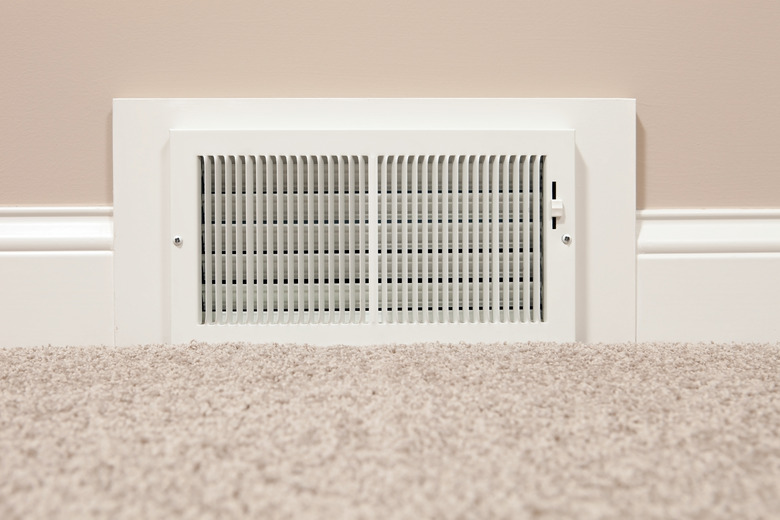Can I Cover A Cold Air Return Vent?
We may receive a commission on purchases made from links.
Are you thinking of hiding your cold air return vent to spruce up your room? Blocking any vent can disrupt the airflow and pressure in your HVAC system, so it's best to keep them open with plenty of space around them. Understanding the importance of the return vents and finding alternatives for dealing with HVAC issues can help.
Tip
You shouldn't cover any vents, including cold air return vents. Covering the vents throws off the balance in the system.
Purpose of Return Vents
Purpose of Return Vents
Your HVAC system pushes cooled or heated air out of the registers to keep your room comfortable. The existing air has to go somewhere. That's where the air return vents come into play. The air goes through those vents and back into the system to keep air circulating. They're essential to maintain airflow and pressure balance, and the air gets filtered when it returns to the unit, which helps improve your home's air quality.
Identifying Return Vents
Identifying Return Vents
A quick look around your room reveals several registers or vents, but how do you tell them apart? The location of return vents is usually on interior walls in most of your rooms except the kitchen and bathrooms.
Your return vents are usually larger than your supply vents. They don't have louvers like registers do, which means you can't open and close them. If you're still not sure, hold a piece of paper up to the vent while the system is running. A return vent will pull the paper toward it instead of blowing it away like a supply vent.
Effects of Covering Return Vents
Effects of Covering Return Vents
The most obvious effect of covering return vents is that the air can't get back to the HVAC system. Covering even one return vent can throw off the system's operation. The system needs to suck the air back into the furnace while it's running, or it throws off the balance and pressure. This can cause issues inside your system, damaging components that are costly to repair.
Blocked return vents make your system less energy efficient, which increases your utility bills. The system often works harder, and it can damage and crack the ductwork, allowing air to escape. When you're using your A/C, the lack of return air can cause your evaporator coils to freeze, which means the system can't cool your home properly.
Reasons People Close Vents
Reasons People Close Vents
Some people cover vents or close registers in rooms they don't use often. They feel this will save energy by not heating or cooling those spaces. However, your HVAC system pushes out the same amount of air no matter how many vents you have open. Closing the vents throws off the balance and pressure, causing damage and forcing the unit to work harder. It can make the system less energy efficient, so leaving all vents open and unblocked is best.
Other people block return vents for aesthetic reasons. They might not look pretty, but they're an important part of your system. Leaving them unblocked is necessary for things to work correctly.
Tips for Hiding Return Vents
Tips for Hiding Return Vents
If you want to cover your return vents because you don't like the look of them, there are ways to make them less noticeable without interfering with how your HVAC system operates. Painting the cover the same color as the wall helps them blend in. You can also replace a boring grille with a decorative metal vent cover to make it attractive.
Placing a furniture piece around the vent without blocking it is another option. A ladder shelf is open with no back and will keep air flowing. Make sure you can position it to keep the return vent open and don't place anything large on the shelf in front of it. You can also place a console or sofa table in front of the return vent, making sure it doesn't block the vent. These furniture pieces let the air flow, but they become the focal point instead of the air return.
